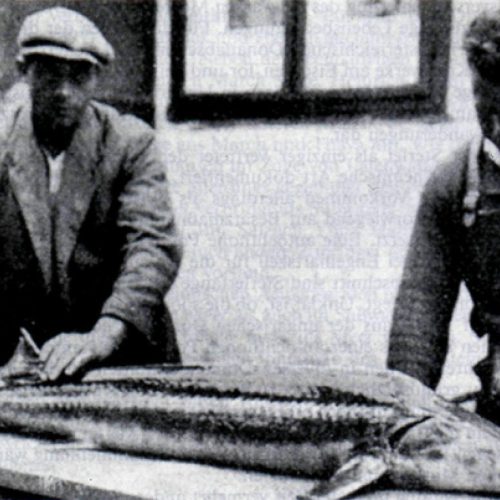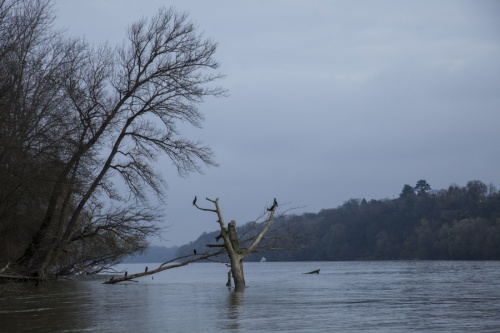News
In search of the “Phantom Sturgeon”
Another very challenging WWF project started in winter 2014/15 in the Transboundary Biosphere Reserve “Mura-Drava-Danube” (TBR MDD). It is trying to find evidence whether the ship sturgeon (Acipenser nudiventris), also called the “Phantom Sturgeon”, is actually extinct or whether there are still some individuals to be found in the Danube.
Never abundant in the Danube River basin, the ship sturgeon is globally listed as ’Critically Endangered’ and listed as ’Extinct’ in Romania and Bulgaria. The last scientifically recorded catch of the species in Romania goes back 30-40 years. The last ship sturgeon along the Danube was caught in Hungary in 2009 at Mohacs within the Hungarian part of the TBR MDD. The fish was then brought to a Research Institute for Fisheries (HAKI) in Szarvas, and then moved to Szigetköz, as it unfortunately did not ingest any food. Even though specialists cared as best as they could for the sturgeon and all efforts were made to keep it alive, it continued to lose weight and died 2 years after it was caught. Before that, only 3 ship sturgeon catches were recorded in the Mura-Drava-Danube area: one in 1989 on the Drava near Heresznye (Hungary), another one in 2003 on the Danube near Apatin (Serbia) and then one more in 2005 on the Mura between Croatia and Hungary.
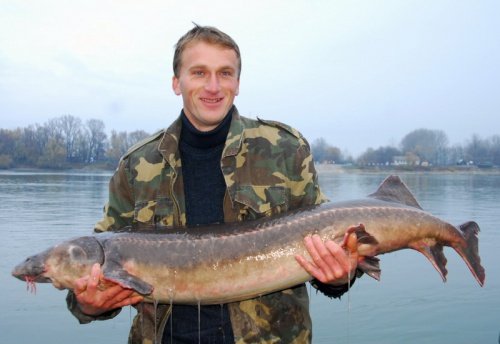
The main threat to the ship sturgeon in the TBR is illegal fishing, but also pollution from agriculture and the degradation of habitats put huge pressure on the fragile population. Lastly, the hydropower dams at the Iron Gate on the Danube cut of spawning grounds by blocking the routes.
As the fish is on the brink of extinction along the Danube, WWF started the first step of a recovery project. In cooperation with the fish expert Mirjana Lenhardt from the Institute for Biological Research in Belgrade monitoring of the ship sturgeon started on the Danube in Serbia in November 2014. A network of local fishermen and holder of fishing rights was established.
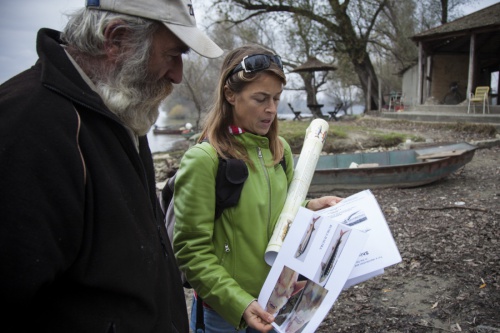
They were given educational sessions as to how to distinguish between the ship sturgeon and the – more common - sterlet (Acipenser ruthenus), as there are similar characteristics between those two sturgeon species. The sterlet, which is the second sturgeon species living in the TBR, is regularly caught in Serbia, Croatia and Hungary.
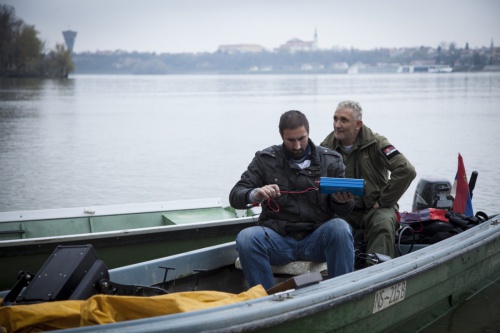
The ship sturgeons is a so-called anadromous sturgeon; generally speaking this means that individuals spend at least a part of their life in salt water and return to rivers to breed. However, there are some non-migratory freshwater populations too, like the one that has been caught in the TBR MDD in 2009. Female individuals are recorded to reach an age of 40 years and reproductively start between 8-15 years in males and 12-18 years in females, although ship sturgeons do not spawn every year.
So far, unfortunately no ship sturgeons have been caught and even sterlet catches are relatively low in comparison to previous years. However, the fishing continues this year. As soon as a potential ship sturgeon is caught, the scientists will establish whether the specimen in question is actually a ship sturgeon by carrying out a DNA analysis. If this is the case, then WWF, in cooperation with scientists and nature conservation authorities, will take further action to help to achieve its survival in the “Amazon of Europe”.
“We hope that, with a combined effort, we’ll be able to find the last remaining ’Phantom Sturgeons’, as this will be the last chance to save this ancient fish from the brink of extinction”, says Duska Dimovic WWF Programme Manager for Serbia.
